10,000 dead of coronavirus in California. 100 dead in its capital. How did we get here?
We have hit milestones and barely flinched.
More than 10,000 in California. More than 100 in the city of Sacramento. They are those grim milestones, the death tolls we eclipsed last week because of the coronavirus.
Like an odometer, the numbers continue to turn. Peer into the rear-view mirror and we can see how we got here, with a radical upending of how we live and, sadly, how we die. Gaze ahead, and we see we’re continuing on a road of closed schools, shut-down restaurants, mandatory masks, pervasive hand-washing, and questions about whether our numbers are even right.
It’s not over.
“What more evidence do you need than that about how deadly this disease can be. Please, let’s wake up to that reality.”
That was California Gov. Gavin Newsom talking at one of his news conferences about the death toll. In July, when it was closing in on 8,500. The governor’s last news conference was Monday. The new five-figure fatality milestone was largely noted in the now-routine accounting of daily deaths.
Our numbers on multiple health department dashboards haunt us every day.
More than a half-million Californians have tested positive for COVID-19, the highly contagious respiratory disease. (Confirmed cases reached 545,787 on Friday, the state Department of Public Health reported.) The Golden State and its capital city hit all these dreary figures within a week of the calendar flipping to August.
The state’s health department upped the official death count to 10,189 Saturday morning. California became the third U.S. state to record a five-digit coronavirus death toll. New York state and New Jersey surpassed that threshold months ago as outbreaks ravaged the region in the spring.
California — the nation’s most populous state — remains below New York’s death tally of close to 33,000 and the nearly 16,000 in New Jersey, despite having a population more than 10 million residents higher than both states combined. Severe illness and death from COVID-19 have taken a slower path through California, which has mostly averted hospital system overload, though intensive care units in some parts of the state are facing much greater strain than in others.
The U.S. on Friday surpassed a total of 160,000 deaths from the coronavirus, according to data compiled by Johns Hopkins University, making up more than one-fifth the global death toll of 716,000. The United States leads the world in both COVID-19 deaths and confirmed coronavirus infections, which topped 5 million Saturday evening.
In Sacramento County, which has a population of 1.5 million, at least 161 residents have died from COVID-19, the county’s health office reported Friday. For the capital, where about 500,000 people live, the city of Sacramento’s death toll reached the century mark Thursday and hit 106 by Friday. Close to 11,000 confirmed infections have been reported in Sacramento County residents.
“We should be very sober about the loss,” the governor said about the deaths in July.
California pandemic in context
All of those numbers are grim, but they can be difficult to assess.
We have been confronted more frequently with localized deadly tragedies: natural disasters, terrorist attacks, mass shootings, plane crashes and industrial accidents that kill in relatively small locations, usually in fairly short time spans.
COVID-19 is killing a greater number of people than these types of disasters but over a longer time frame and spread out over vaster space. We’re also facing a microscopic virus, a more intangible-seeming killer. That’s led to an attitude described in a Washington Post headline from late May: “The pandemic isn’t over. But America sure seems over it.”
Prefacing it as “sobering perspective,” climate scientist Daniel Swain of the UCLA’s Institute of the Environment and Sustainability tweeted Thursday that California’s coronavirus death toll “now (greatly) exceeds the cumulative death toll of all earthquakes, wildfires, and floods in the region over the past century ... combined” in the state.
A sobering perspective: the death toll from #COVID19 in California now (greatly) exceeds the cumulative death toll of all earthquakes, wildfires, and floods in the region over the past century...combined. https://t.co/0CMoV5e1MU
— Daniel Swain (@Weather_West) August 7, 2020
COVID-19 began marching through California and the rest of the country around early March, with the first reported death in Placer County, a man who had traveled on the stricken Grand Princess cruise ship. Bay Area officials later found the first known death from COVID-19 from as early as Feb. 6, six months ago Thursday.
Since then, the pandemic has brought about not just increasing infections and hospitalizations, but a devastating economic recession, widespread societal anxiety, heightened political polarization, serious health and safety concerns, death and grief.
“There are incredibly competing demands here,” Sacramento County health chief Dr. Peter Beilenson said in July. “It’s a huge balancing act. It was reasonable to do some of the openings, but no one has 20-20 foresight.”
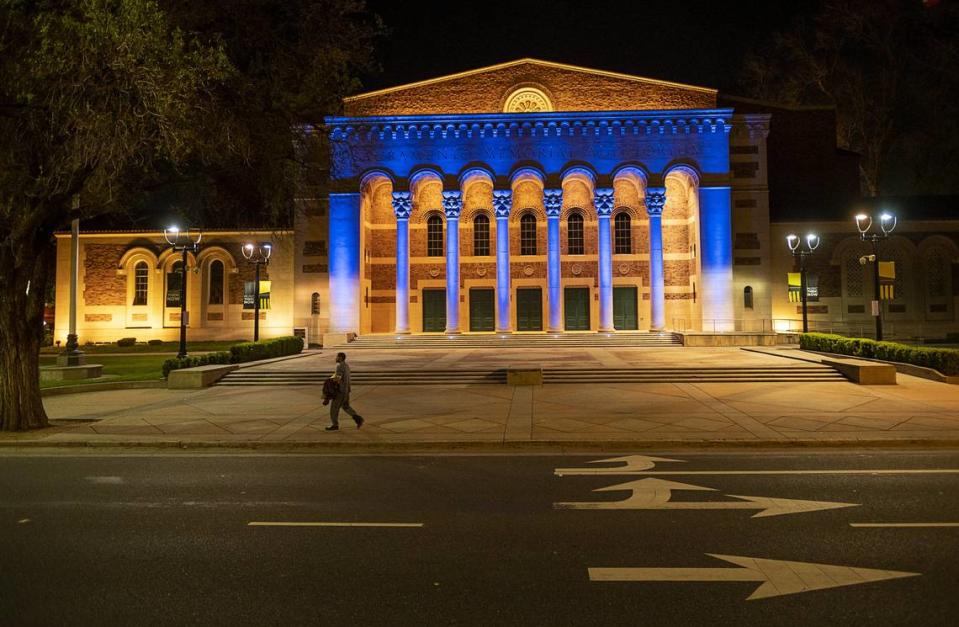
The road to now
The uncertainty level at the start of August may be the highest it’s been in California since Newsom first issued a stay-at-home order for the state’s 40 million residents in the spring.
Newsom’s unprecedented order came March 19 to “flatten the curve” — to mitigate the spread of the coronavirus to prevent the state’s health systems from becoming overwhelmed by a surge in patients. California was the first in the U.S. to institute such a mandate.
“There’s a social contract here,” Newsom said in March. “People, I think, recognize the need to do more and to meet this moment. People will self-regulate their behavior.”
Residents, businesses, churches, sports teams, event venues, local governments and other entities across California have been riding a roller coaster of shutdown orders, reopening plans and other protocols in the 20 weeks since that initial order.
The first six or so weeks were consistently strict. Newsom and the state ordered all businesses and gatherings deemed non-essential to cease, and California proceeded through its tight lockdown through the end of April.
The shutdowns ended up dealing permanent death blows to longtime landmark institutions, as well as up-and-comers, as exemplified in Sacramento’s diverse restaurant scene. When the state ordered dine-in restaurant service to stop, many simply could not survive off takeout and delivery business alone.
Businesses in which teleworking was infeasible or impossible were forced to furlough or lay off employees. Others folded entirely. Millions sought unemployment benefits, flooding the system. The system remains overloaded, with the director of the state Employment Development Department recently acknowledging that those those seeking assistance are faced with wait times of more than a month just to get a call back.
The early returns on social distancing and the shutdown were promising. Data trends showed new cases and hospitalization rates plateauing; the latter figure stayed stable at between 3,000 and 3,500 cases in hospital beds from April 12 through June 19. The state steadily saw testing capacity increase, reaching a two-week average of 10,000 processed per day as of April 16; this rose to more than 18,500 by May 1. Today, the daily average is above 120,000.
As California’s testing ability increased, the percentage of those tests returning positive decreased, indicating the spread might have been slowing down. The state came in under its self-set goal of 8% positivity for the first time on May 3, and by May 16 the rate had fallen below 5%, the World Health Organization’s recommended threshold for reopening an economy.
In early May, Newsom in his near-daily news conferences started referring to a “resilience roadmap” — which remains the state’s official name for its four-phase economic reopening plan.
Phase 1 represents a full shutdown of non-essential businesses and services; Phase 2 allows non-essential entities, considered “low risk,” to reopen; Phase 3 includes higher-risk businesses; and Phase 4 would be the lifting of the stay-at-home order.
The reopening process started in California around mid-May. The Newsom administration unveiled guidelines allowing, say, retail shopping to resume on a curbside pickup-only basis.
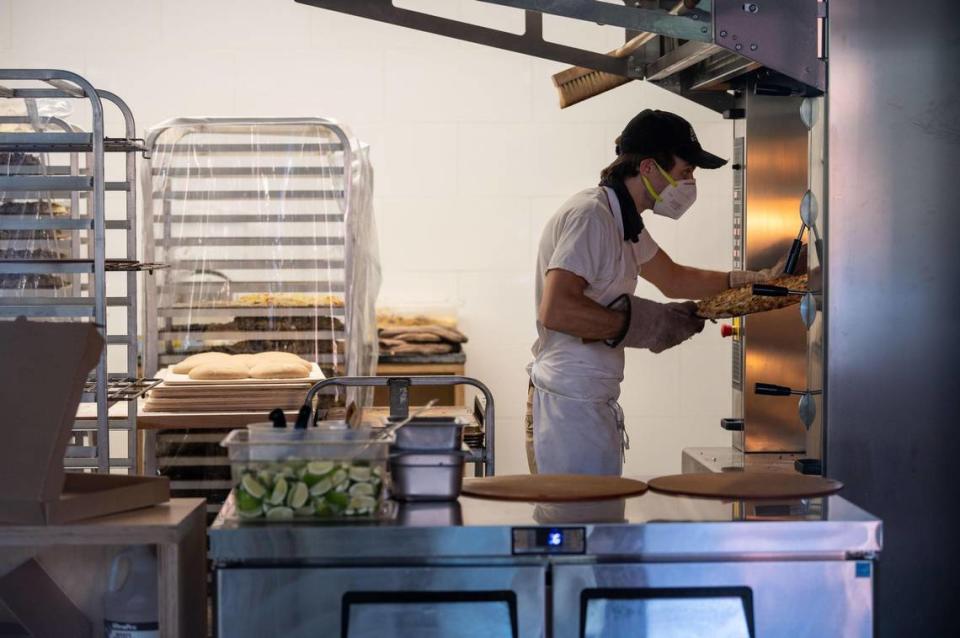
For many business owners and other stakeholders, this wasn’t nearly enough. Facing criticism — largely coming from from less densely populated California counties — Newsom detailed a “self-attestation” process and said the state would adopt a “regional variance” model for reopening.
“One size does not fit all. We recognize the conditions across the state are unique and distinctive depending where you are across the state,” Newsom said in May.
If counties could show data demonstrating minimal COVID-19 activity, they would be allowed to accelerate in the process.
Counties had to go two weeks without a death and needed a contact tracing staff with at least 15 tracers on it per 100,000 residents. But the state loosened self-attesting criteria, including both of those measures.
From mid-May to early June, all but seven of California’s 58 counties received the go-ahead to open businesses along with checklists of sanitation and social distancing requirements: retail stores, restaurants for dine-in service, indoor malls, gyms and more got the green light.
Places of worship could hold indoor, in-person services again with a hard-capacity limit, which — for a few weeks, at least — halted some of the lawsuits churches had filed against Newsom and the state.
As June progressed, the tides started to turn. The numbers started to rise again.
Disparities became more evident, with data and surveys showing how coronavirus was disproportionately devastating California and the Sacramento area’s Black and Latino populations. They have died at higher rates, due in large part to decades of racial inequalities including health care access, experts say. Latinos also make up a large proportion of the state’s essential workforce, including in jobs in which distancing is challenging or impossible such as farm work.
Leaders from Newsom to Sacramento-area county health officials began to note an increase in coronavirus transmissions. Contact tracers attributed this primarily to get-togethers among friends and extended family members.
“We cannot continue to do what we have done over the past few weeks,” Newsom said in a June news briefing. “The reality is people are mixing, and that is increasing the spread of this virus. That shouldn’t surprise anybody. ... We are putting people’s lives at risk.”
The statewide coronavirus health order prohibits non-essential gatherings with anyone outside one’s immediate household. Californians nonetheless socialized. Parties for graduating seniors. Barbecues for Memorial Day. Birthdays.
“While you start with all the best intention, maybe people show up with their masks, they immediately put the masks down in order to have a drink, eat some food, and all of a sudden cousins get a little closer” Newsom observed in another June briefing. “The kids are jumping on top of you. Aunt Susie is now pulling you off and then makes the mistake to kiss you goodbye and says, ‘Oh, I didn’t mean to kiss you goodbye.’ All the normalcy of life, love, family, relationships, and you let your guard down.”
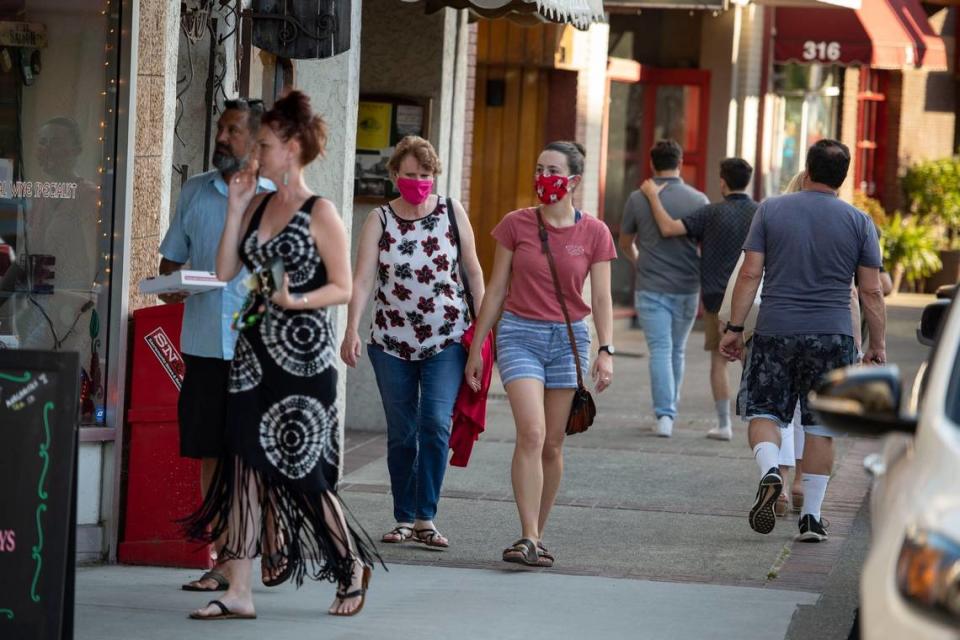
Mask on, mask off
By the second half of June, new lab-positive cases of COVID-19 started to explode; hospitalizations, ICU totals and deaths followed.
California set a record high for new cases in a day, reporting over 4,000 on June 17. It broke the record again June 18. Again, June 20. Again on back-to-back days, June 22 and June 23, with 7,149 new cases the latter day. On June 29, 9,480 new cases rolled in. On July 7, triple digits: 11,694. On each of July 21 and July 22, more than 12,000 new cases flooded in.
Concurrent hospitalized cases of COVID-19 skyrocketed as well, peaking around 7,200 in late July after never exceeding 3,500 between mid-April and mid-June.
Near the beginning of June, the state established a county monitoring list. A county ends up on the so-called watchlist if its COVID-19 numbers exceed any of a handful of thresholds relating to virus transmission, hospitalization rate and hospital capacity. A half-dozen or so counties made the list at its inception; it’s grown steadily since then to encompass the vast majority of California’s populace.
On June 18, Newsom and the CDPH mandated the wearing of masks or cloth face coverings in most indoor public spaces, with very limited exceptions.
“We are seeing too many people with faces uncovered – putting at risk the real progress we have made in fighting the disease,” Newsom said at a June news conference.
Announcements came from some law enforcement agencies, including the Sacramento County Sheriff’s Office, that officers would not enforce the mask requirement. It remains a divisive issue.
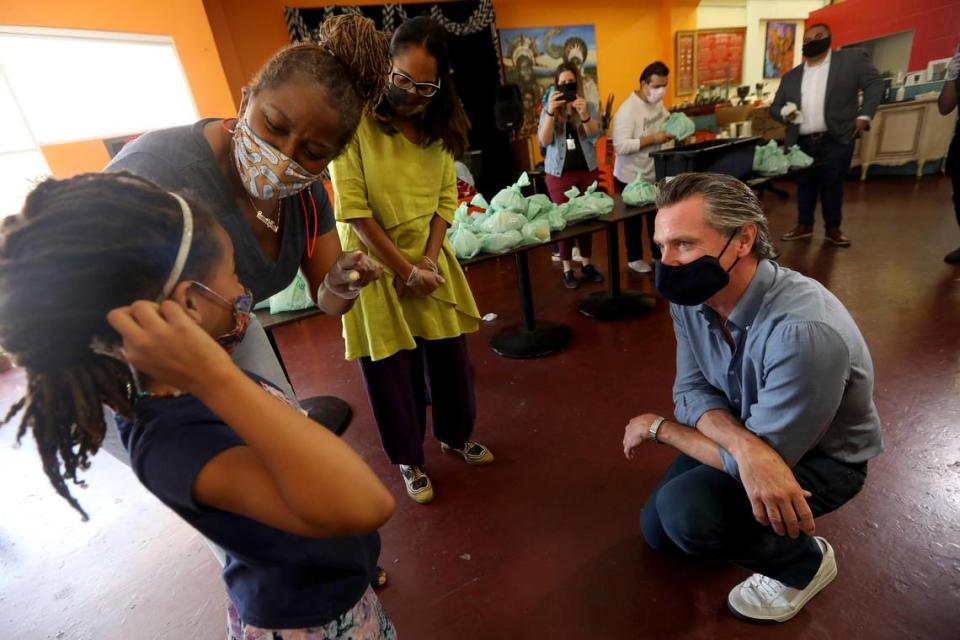
A moment unmet
While the surge was attributed mostly to gatherings, some experts, including Beilenson, suggested bars reopening amid a global health pandemic may have been a bad idea.
In July, the CDPH noted the difficulties that bars present: “A bar, foundationally, is a social setting where typically not only small groups convene, but also where groups mix with other groups ... Further, alcohol consumption slows brain activity, reduces inhibition, and impairs judgment.”
Faced with the resurgence of COVID-19, Newsom twice in early July rolled back reopening.
On July 1, the governor said all counties on the state watch list for more than three days in a row would have to shut down bars and a range of indoor businesses, including dine-in restaurants, card rooms and movie theaters.
On July 13, Newsom mandated the statewide shutdown of bars — indoor or outdoor — as well as indoor dine-in restaurants, wineries, movie theaters, zoos, museums, card rooms and other entertainment centers. And for counties on the watchlist, places of worship, fitness centers, shopping malls, personal care services, non-essential office spaces, hair salons and barbershops were also ordered to suspend indoor business.
Because deaths lag a few weeks behind new cases in the data due to the time symptoms take to progress to that point, California’s COVID-19 fatalities continued to climb.
A graph from CDPH shows that deaths statewide had been declining just prior to July, from a two-week rolling average of 68 daily deaths at the start of June to 63 by the end of it.
Then, the rate rose sharply — to 80 average daily deaths by July 11, 100 by July 18, around 115 by the end of July and 130 as of this past Friday.
All of that, brought us here.
No safety in numbers
On Monday, local health officials statewide began to report a serious issue with the system nearly all counties use to report data on COVID-19, California Reportable Disease Information Exchange (CalREDIE), resulting in severe delays.
A technical problem led to a major slowdown in laboratories reporting new case data to both county health departments and to CDPH via CalREDIE.
“We’re not really sure of our case rate until this gets fixed,” Kat DeBurgh, executive director of the Health Officers Association of California, said early last week. “We don’t know how many people have tested positive. That means the local health department can’t call them and begin the contact tracing process or offer them services.”
CDPH and state Health and Human Services Secretary Dr. Mark Ghaly acknowledged the data glitch Tuesday. On Friday, Ghaly explained what happened.
Ghaly says his office believes the problem began July 25, a Saturday, when a server running part of the system lost power. Officials made some “technical changes” to address the problem but failed to revert those changes, causing further data delays. The state stopped receiving data from Quest labs, a major source of COVID-19 data, because officials failed to renew a certificate to receive the data on time, according to Ghaly.
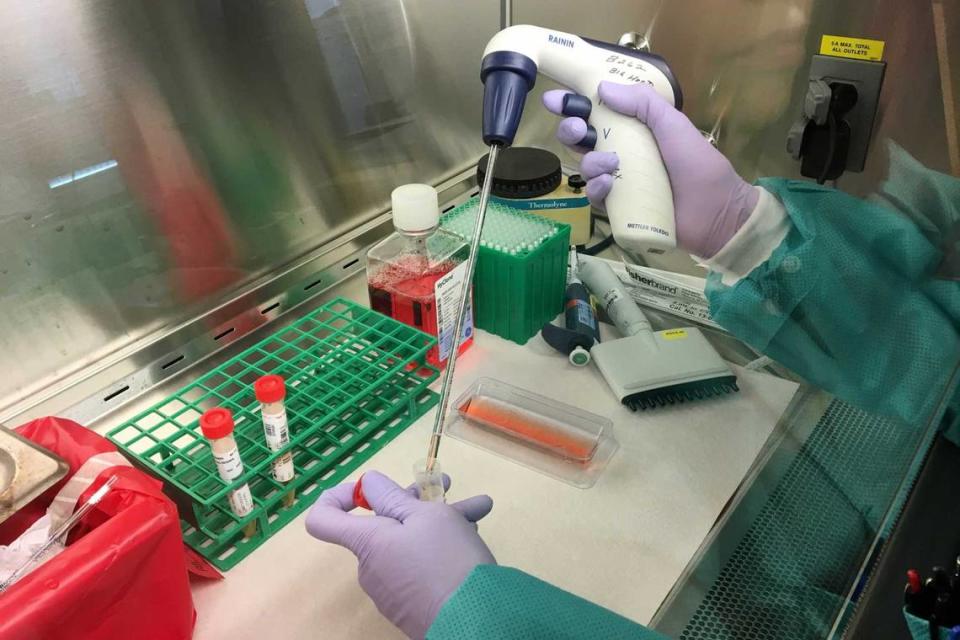
The result? An estimated backlog of 250,000 to 300,000 disease reports, the large majority of which are for COVID-19.
Newsom, who cited a drop in hospitalizations and ICU patients the last time he spoke Monday, has not commented on the statistical issue.
Health officials have implemented a series of workarounds and checks to ensure data is processed on time, Ghaly said. He announced the state is building a new system to replace CalREDIE, which wasn’t designed to handle the huge volume of data introduced by the pandemic.
As of Friday afternoon, statistics on case rates and infection totals released by CDPH continue to include a disclaimer in bold: “Due to issues with the state’s electronic laboratory reporting system, these data represent an underreporting of actual positive cases in one single day.”
While the problem and backlog remain, the state has stopped adding and removing counties from its monitoring list, CDPH spokeswoman Ali Bay said. As of Friday, that list included 38 counties that make up 97% of the state’s population.
Newsom’s office last month announced that a county needs to be off the list at least two consecutive weeks before allowing K-12 schools to reopen for in-person learning. On Friday, the state said counties must be off the list three or more consecutive days before permitting colleges or universities to hold indoor lecture courses.
See which counties are on California’s coronavirus watchlist
The data problem also prevents local officials from knowing if elementary schools in watchlist counties can apply for a waiver to reopen classrooms. The Newsom administration announced Monday that counties with fewer than 200 infections per 100,000 residents can apply for waivers to reopen classrooms for kindergarten through sixth grade.
Ghaly expressed some optimism Friday, though. He pointed to hospitalization figures, processed in a system separate from CalREDIE. They have dropped by 10% in the past two weeks. Late in the week, California fell below 6,000 hospitalized coronavirus patients for the first time in weeks.
Ghaly said the state is optimistic COVID-19 cases and spread of the infection are truly on the decline as a result of the state’s rejuvenated shutdown order.
They need the data to tell. “We apologize,” Ghaly said. “You deserve better. The governor demands better.”
The Bee’s Tony Bizjak, Sophia Bollag, Kim Bojórquez, Jasmine Kerber, Maria Heeter and Alexandra Yoon-Hendricks contributed to this story.

